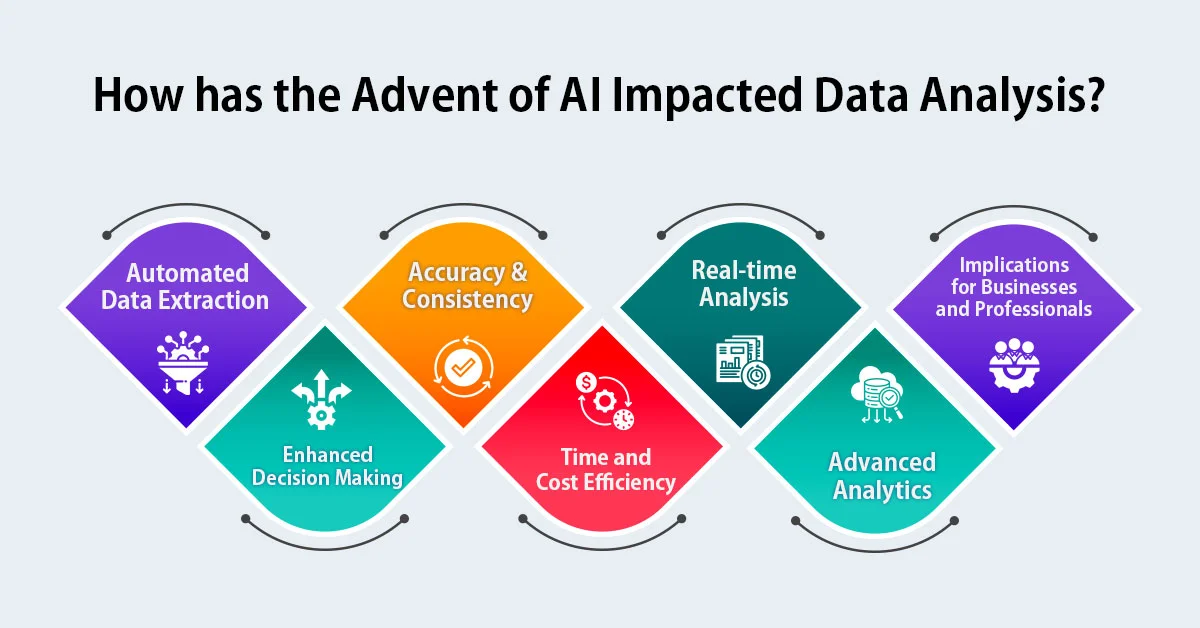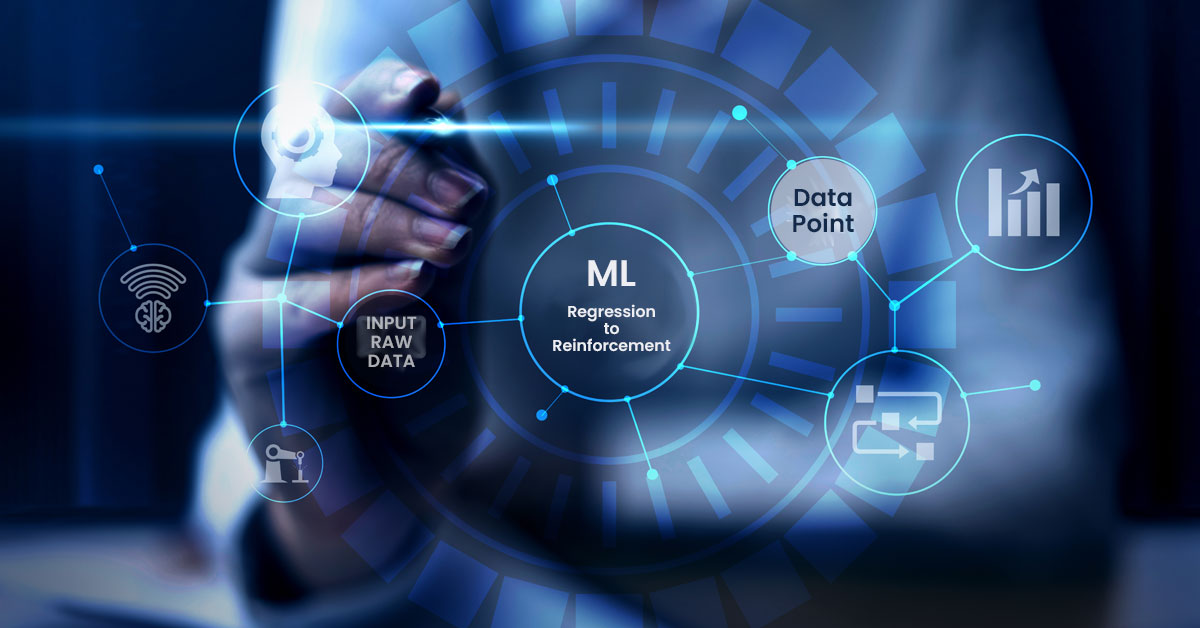Optimizing Productivity: How AI Parsing Tools Transform Data Analysis

5 min read
With great pleasure, we are providing some thoughts on a subject that is transforming the way we think about data: “Optimizing Productivity: How AI Parsing Tools Transform Data Analysis”.
Professionals and corporations are always looking for methods to increase production and efficiency. The development of AI parsing tools for data analysis is one of the biggest advances in this endeavor. These best AI productivity tools are not just changing the way we work with data; they are also changing the way we think about strategic planning and decision-making.
How has the Advent of AI Impacted Data Analysis?
The use of artificial intelligence (AI) in data analysis represents a substantial departure from conventional, manual techniques. AI parsing technologies do activities that would typically take hours or even days in a matter of minutes by automating the extraction, processing, and analysis of data. Beyond just being convenient, this automation creates new opportunities for data processing and analytics.
Key Benefits:
Data analysis is changing dramatically due to AI parsing technologies. AI increases efficiency and improves a company’s ability to make strategic decisions by enabling automated data extraction, ensuring accuracy and consistency, and offering real-time analysis.
-
Automated Data Extraction
Efficiency: AI significantly accelerates the process of extracting data. Not only does traditional manual entry take a long time, but it also makes mistakes. AI makes it possible to extract data from a variety of sources, including databases, emails, PDFs, and web pages, in a fraction of the time that a human would need to complete the same operation.
Versatility: A wide range of data sources and formats can be handled by AI systems. This adaptability is essential in the data-driven world of today, where data can take many different forms.
Scalability: As the volume of data grows, AI systems can scale accordingly, maintaining the same level of efficiency. This is vital for organizations that are rapidly expanding or dealing with fluctuating data volumes.
-
Accuracy & Consistency
Error Reduction: The ability of artificial intelligence to reduce errors is one of its most important benefits. Due to exhaustion, attention, or miscommunication, human data entry is likely to errors. On the other hand, AI systems adhere very closely to preprogrammed protocols.
Reliability: For any analysis to be considered legitimate, data handling consistency is essential. Artificial Intelligence ensures consistent data processing and analysis, resulting in more dependable results.
Enhanced Data Quality: Enhanced precision and coherence intrinsically elevate the caliber of data. Reliable data is necessary for analytics and decision-making to be successful.
-
Real-time Analysis
Immediate Insights: Real-time data analysis capabilities of AI are revolutionary since they provide instantaneous insights. Thus, companies are able to react virtually instantly to new trends, consumer behavior, and operational problems.
Dynamic Decision-Making: Making decisions becomes a continuous and dynamic process when real-time analysis is used. Companies that stay ahead in fast-paced environments are able to swiftly modify their plans in reaction to fresh data.
Predictive analytics: Understanding the present is only one aspect of real-time analysis; another is making predictions about future trends. AI helps organizations foresee and prepare for future circumstances by recognizing trends and projecting outcomes.

-
Implications for Businesses and Professionals
Deep and varied are the consequences of AI-driven technologies for professionals and enterprises in domains such as advanced analytics, time and cost efficiency, and decision-making. An examination of each facet is provided below:
-
Enhanced Decision Making
Smart Strategic Decisions: Artificial intelligence (AI)-powered data analysis solutions provide in-depth knowledge on a range of business topics, including consumer preferences, market trends, and rival tactics. Businesses are able to make better decisions because to this extensive data.
Risk Mitigation: Businesses can develop strategies to reduce risks by identifying possible dangers and obstacles early on, by AI’s capacity to evaluate large datasets.
Agile Adaptation: By offering real-time data and trends, AI solutions help businesses quickly adjust to changes in the market. This agility has the potential to be a major competitive advantage.
-
Time and Cost Efficiency
Automating Time-consuming and Routine operations: Artificial intelligence (AI) solutions can free up staff members’ time to work on more intricate and creative projects by automating repetitive operations like data entry and analysis.
Resource Optimization: Businesses can save money and increase productivity by optimizing their resource allocation by cutting down on the amount of time spent on manual data processing.
Increased Productivity: Employee productivity can rise when they have more time to dedicate to high-value, strategic projects.
-
Advanced Analytics
Predictive Modeling: Businesses can foresee market trends, consumer behavior, and possible commercial prospects through AI’s capacity to carry out intricate analytical tasks like predictive modeling.
Personalization: By adjusting goods and services to each customer’s unique tastes, AI-driven analytics can improve client happiness and experiences.
Growth and Innovation: New growth prospects are identified through deep insights derived from advanced analytics, which stimulate innovation. It also helps with new business model development and process optimization.
Challenges and Considerations in Implementing AI Parsing Tools
Although AI parsing technologies greatly improve data analysis and company efficiency, there are certain obstacles and important factors to take into account when using them. Data security and privacy are top priorities. Ensuring the security and confidentiality of sensitive data is essential since these instruments handle enormous volumes of sensitive data. This is made worse by the possibility of data breaches, which makes strong security measures necessary to protect against cyberattacks and illegal access. Furthermore, adherence to data privacy laws like the GDPR is essential. To prevent legal issues and harm to their brand, businesses need to make sure that their AI applications comply with these rules.
The proper implementation of AI also involves ethical considerations, particularly in light of individual privacy rights. The requirement for qualified personnel with the ability to administer AI systems and appropriately evaluate the data these instruments produce is another major obstacle. Because AI technology is always changing, this requirement is dynamic and calls for constant training and improvement.
Furthermore, there’s a chance that we will rely too much on AI, which could reduce the importance of human decision in decision-making. This is especially important considering the potential for bias and mistakes in AI resulting from faulty training data. Maintaining human oversight is essential to ensuring the precision and equity of AI results.
Compatibility problems may arise when integrating AI parsing tools with the current IT infrastructure, particularly in businesses with legacy systems. The successful integration of AI technology necessitates significant modifications to organizational procedures and workflows, underscoring the need of proficient change management in facilitating a seamless transition and maximizing its potential. As a result, even though AI parsing tools have revolutionary potential, tackling these issues and concerns is essential to their appropriate and successful integration into the corporate world.
Conclusion
The way businesses approach data-driven decision-making and efficiency has significantly changed with the introduction of AI parsing technologies into data analysis. These tools not only improve data analysis speed and accuracy, but they also create new opportunities for strategic planning and innovation. The increasing advancement of technology is anticipated to intensify the dependence on artificial intelligence (AI) for data parsing and analysis, hence reinforcing its vital role in achieving company productivity and success. In summary, AI parsing tools are catalysts for change that move companies toward a more data-driven, efficient, and inventive future. They are more than merely optimization tools.
Integrating AI-powered technologies is not just about keeping up with the times as we traverse a more data-driven environment, but also about driving creativity and efficiency.
I’m interested to see how businesses in different industries will use these tools to transform their data analysis procedures.
Let’s talk about it! What effects do you think AI parsing tools will have on your sector? Are there any particular problems that you believe AI can solve?
The transformative power of artificial intelligence in business for innovation and efficiency gains.
Published: January 31st, 2024





